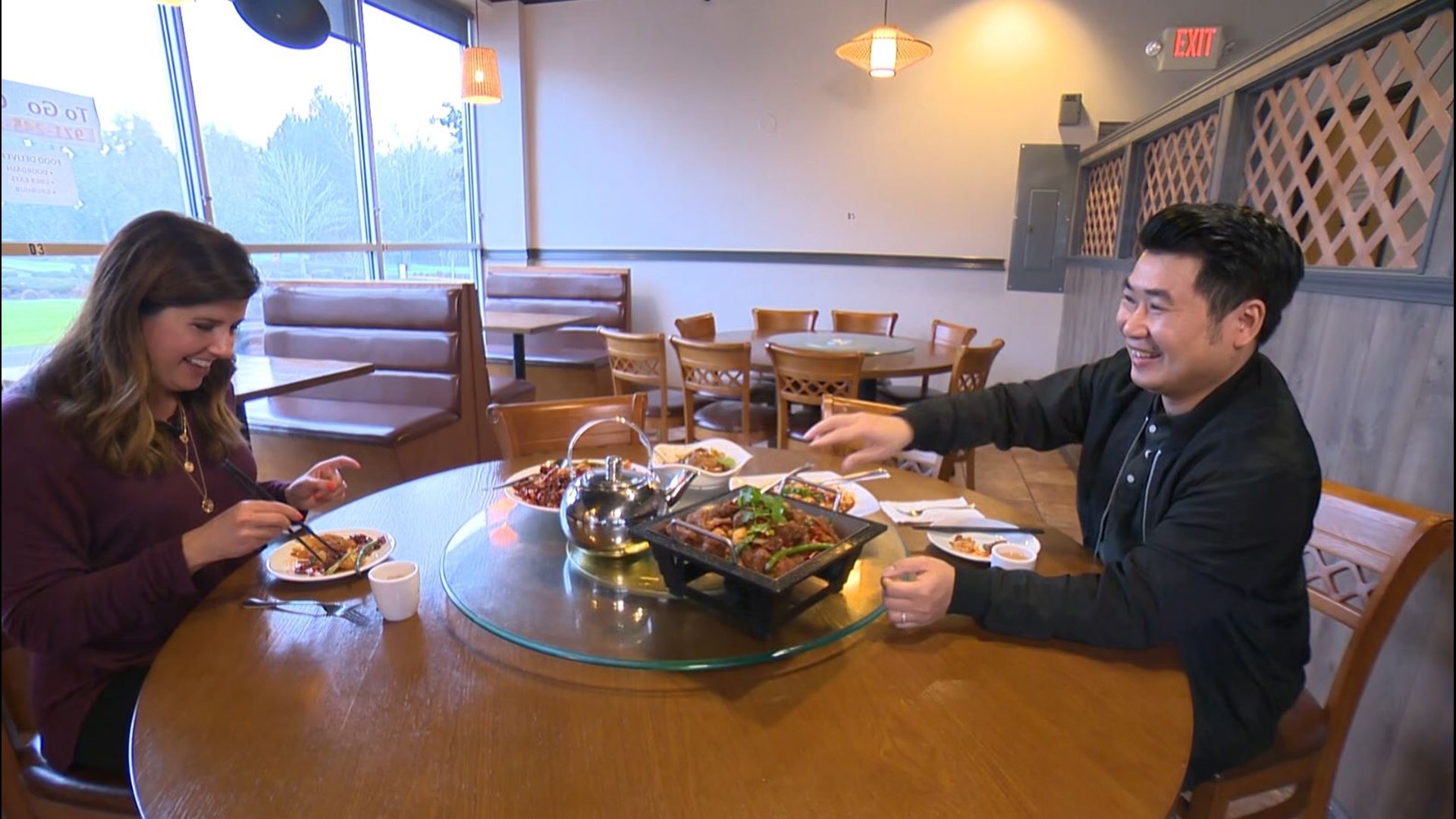BEAVERTON, Ore. — Part of the fun of the Winter Olympics is getting to know the country it's being hosted in. Food says so much about culture, geography, history and socio-economics.
KGW Sunrise's Nina Mehlhaf sat down for a traditional Sichuan-style meal with restaurant owner Daniel Chen, who moved to Portland from China when he was 26 years old. He owns Szechuan Garden restaurant on Walker Road in Beaverton.
"When I bring the food to the table, up to the whole family, and they enjoy the food and are talking, I'm so happy about that," he said.
Chen is marking his 10th year in the restaurant industry in the United States and his third year as an owner.
"Portland is the first place I come in United States and the only one place I live here," Chen said. "I live in Portland for a long time. It's over 13 years already."
Chen is Cantonese. It's both the dialect and the food of southern China's Guangdong province where Hong Kong is located. China has 23 provinces. It's land mass is only 2% larger than the U.S., but there are 1.1 billion more people. Where you are in the country determines what kind of food and tastes you discover.
There are eight cuisines; from light, fresh and healthy on the coast with seafood, to hot, spicy and salty with more animal proteins farther north and inland.


Chen fell in love with the spicy, mouth-numbing flavors of the Sichuan province to the north of him.
"They had the particular flavor of the spice and the pungency because they are using a lot of garlic and some dried pepper. As well as the unique flavor of the numbing because they use the Szechuan peppercorn," Chen said.
During the interview with KGW, Chen's chef made four traditional dishes to try and talk about.
"This one we call the mixed beef. It's a cold dish and the other is Chong Qing Hot Chicken."
The mixed beef is shaved thin with strips of tendon and stomach, brined then mixed with chili oil, celery, onions, ginger and peanuts. It's fresh, but savory and crunchy; a good temperature and texture compliment to the hot chicken.


"You can see the chicken dice and then we deep fry the chicken. Then we cook it with the dry pepper and also with Szechuan peppercorns. So we taste spicy, a bit numbing. It'll be crispy outside. We sell this a lot every day. A lot of people like this one," Chen said of the Chong Qing Hot Chicken.
KGW asked Chen about his take on the Americanized version of Chinese food that a lot of people think about when they think of the cuisine or certain dishes.
"I think in America, a lot of the cooking skills are just pan fry, toast and deep fry. A lot of the ingredients [Americanized Chinese restaurants] are using are maybe ketchup, sugar, vinegar or onions, pineapple, whatever they put in there. It's really simple flavors, but [in] Szechuan food, we use a lot of the Szechuan peppercorn. It tastes so different between the authentic Szechuan food and the regular American Chinese food."


The next dish his chef brought out is called Mapo Tofu. It's one of China's most famous dishes and it has a very interesting back story.
'Ma' literally translates to 'pockmarked face'. 'Po' means 'old woman' or 'grandma'. There are slight variations to the story, but they go back to the 1860s. A woman named Mrs. Chen had a restaurant or food cart in the Sichuan city of Chengdu at the base of a bridge. One version of the story has laborers bringing her ingredients to cook up so they could save money. Others have said she was left with a few things at the end of the day and whipped up a dish so good, they came back for more and more only to, not so nicely, name it for her.
The dish is made up of firm tofu, ground beef or pork, black bean paste, garlic, ginger, onion, peppercorns and chili oil cooked fast in a hot wok. It tastes smooth and you feel a bit of the numbing feeling in your mouth depending on the spice level. Chen's restaurant, like many Chinese restaurants, lets the customer decide what spice level they want. Szechuan Garden does a scale of 1-5 and recommends medium. Spicier than that, and that's all you'll taste and you'll miss the point of the dish.


The last dish is called Hot and Spicy Dry Pot with pork spare ribs, green beans, peppers and chilis. Ten ingredients go into making the sauce, which is kept hot at the table by a lit flame underneath, carrying the aromatics around the room. You use a combination of your fingers and chopsticks to hold the ribs and pull the meat off with your teeth. It's more of a restaurant dish than a home meal in China.
"I love this," Mehlhaf said. "It has that salty taste, but there's a crunch and there's almost a sweetness in there too, like allspice?"
The pandemic has kept Chen from his regular trips back to China. He will go again when it's safe. He is excited for people to learn more during the Olympic Games, but right now, it's the simple pleasures.
"I'm very happy each time the customer tells me 'I like your food and I like to talk to you. You have really good service.' I'm so happy," he said.

